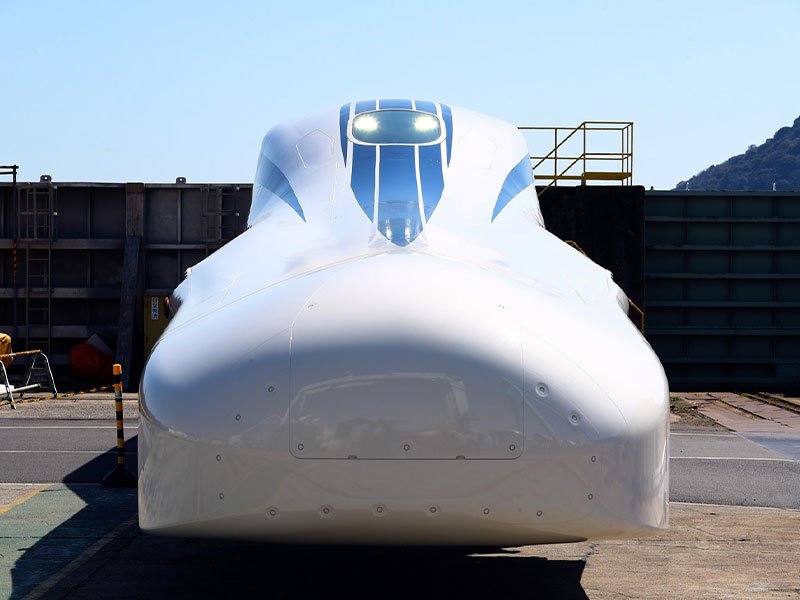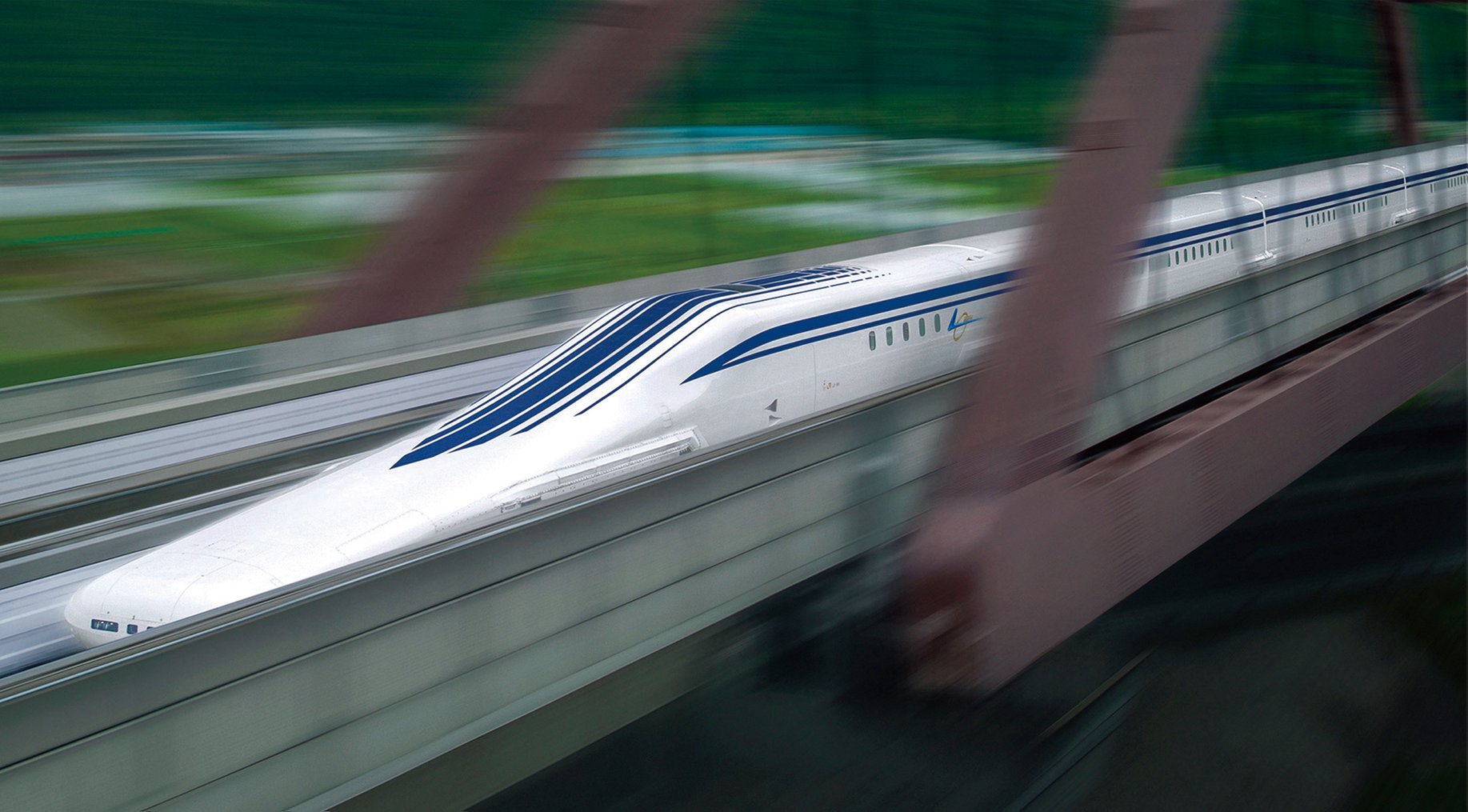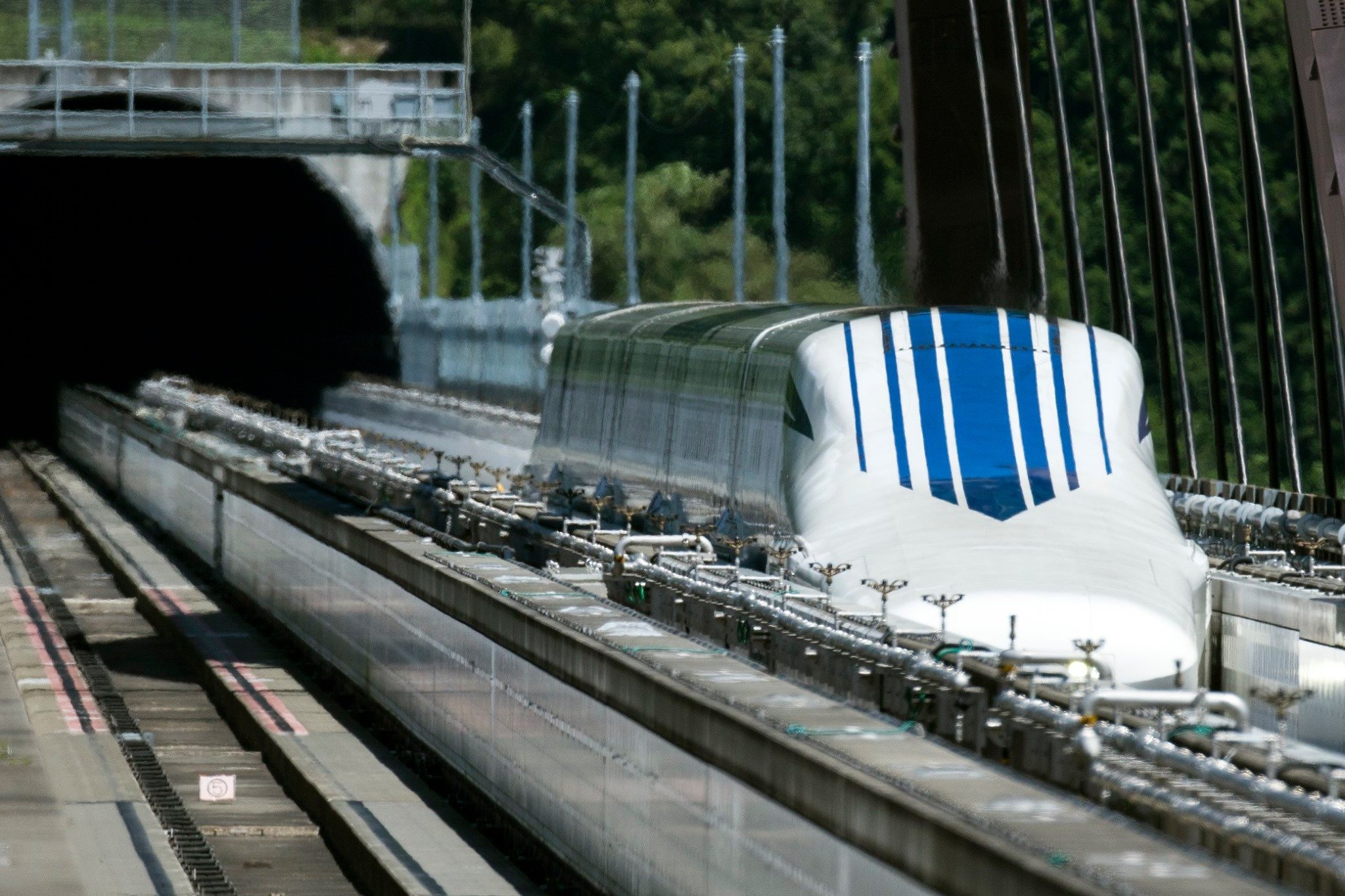
Although much of the world is still suffering under the COVID-19 pandemic, many countries are beginning to resume normal economic and social activities. The freedom of movement that we once enjoyed will have greater significance than ever as we move on to a "new normal".
What would you imagine if you were asked, "what’s the fastest railway in the world"? The French TGV, German ICE, Shanghai MAGLEV, Japanese Shinkansen, Hyperloop...?
Do you know there is a railway that runs at 603 kph (311 mph) with onboard passengers and that is certified by the Guinness Book of World Records as the world’s fastest? The LinearChuoShinkansen (Superconducting Maglev or SCMAGLEV), which is scheduled to open in Japan in 2027, will connect Tokyo and Nagoya, a distance of 300km, in just 40 minutes at an operating speed of 500 kph. Right now, this world's fastest railway is completing operating tests in preparation for its inauguration.
The completion of the Linear Chuo Shinkansen’s latest car was just announced. Changes were made in the position of the front-facing camera and in the body coloring. The most significant change, however, was the optimization of the shape of the head vehicle. This was made possible by removing the gas turbine generator, which was no longer necessary due to the Linear Chuo Shinkansen’s use of contact-less power induction. As a result, the vehicle's air resistance was improved by 13% and power consumption and noise were also reduced. The new car will allow for further improvements in anticipation of the inauguration of commercial operation in 2027. We can hardly wait and we hope you feel the same way!
Why do we need a high-speed rail (HSR) in the first place?
True HSR systems, based on CrashAvoidance, promote mobility by accelerating movement between cities and have the power to transform cities, regions, and even nations. The Principle of Crash Avoidance is the basic philosophy that any possibility of a crash can be completely eliminated by means of two systems: 1) dedicated track for high-speed rail that is free of level crossings (grade crossings), and 2) an ATC (Automatic Train Control) system that categorically prevents any crashes by controlling train speed. True HSR promotes mobility and has the power to change people’s lifestyles and stimulate the development of cities and regions. HSR that crosses national borders will bring a Transformation to regional economies and society and will serve as a catalyst for major changes and development both within and between countries.
As key infrastructure, the Shinkansen that operates in Japan and Taiwan connects major cities within those countries safely, quickly, and punctually. These qualities, along with high frequency and high capacity, support socio-economic activities by bringing about Transformation. In addition, the Shinkansen is both highly efficient and environmentally-friendly, and is gradually replacing aviation and automobiles since it emits less CO2 and is more comfortable and safe than other forms of transportation.
The secret of the Linear Chuo Shinkansen's tremendous speed lies in its Superconducting Magnetic Levitation (SCMAGLEV) system, which is the most advanced surface transportation system in the world. Its ultra-high speed will greatly shorten travel times and improve convenience.
As a public transportation system, safety should not be compromised for speed. In that respect, the Linear Chuo Shinkansen has inherited the principle of Crash Avoidance from the original Shinkansen system. Operation of the Linear Chuo Shinkansen has already surpassed 2,230,000 km (around 55 laps around the world) in 20 years from 1997 to 2017 with no accidents. There is no doubt that the Linear Chuo Shinkansen is now a proven technology.
The Linear Chuo Shinkansen enables 10cm of levitation from the ground through the strong magnetic force of superconductivity, and since the rolling stock is always kept in a stable position at the center of the guideway, there is no danger of derailment due to an earthquake.
With a capacity of 1,000 persons per car, the Linear Chuo Shinkansen is able to transport more passengers than an airplane and do so faster, safer, and more efficiently. The Linear Chuo Shinkansen, satisfies numerous conditions for a transformative technology, such as safety, high speed, punctuality, high frequency, and high capacity, and will be a true game changer, greatly impacting people's lives and economies, as was the case when first Shinkansen was introduced 56 years ago.
The realization of the Linear Chuo Shinkansen will strengthen the links between Japan’s three major metropolitan areas of Tokyo, Nagoya and Osaka, which account for 60% of Japan's GDP, and create a mega-metropolitan area: SuperMegaRegion.
With the spread of COVID-19, people have experienced restrictions on mobility, but have also learned new ways of working and living, and have re-recognized the joy of meeting people in person. The inauguration of the Linear Chuo Shinkansen will foster greater encounters among people, accelerate movement between cities, and provide people with a more flexible ways of working and living. The construction of new stations will create new flows of people and promote the development of new areas along the route. Regional development is a unique benefit that flows from railways, and the Linear Chuo Shinkansen will be no exception.

SCMAGLEV is not just about Japan.
The NortheastMAGLEV linking Washington, D.C., New York City and Boston is also under development. Air, road, and rail congestion on America’s Northeast Corridor is severe. The SCMAGLEV can connect Washington, D.C. and New York City in less than an hour. Imagine a future in which you can travel between these cities quickly, comfortably and on time. There is no doubt that Transformation will happen.
The benefits of high-speed rail based on the Principle of Crash Avoidance and of SCMAGLEV can be found on the IHRA website and Central Japan Railway Company website.
IHRA
https://www.ihra-hsr.org/en/
Central Japan Railway Company
https://scmaglev.jr-central-global.com/
The Linear Chuo Shinkansen is accelerating preparations for its opening in 2027. The new cars mentioned earlier will be manufactured by IHRA Regular Members Hitachi, Ltd. and NipponSharyo, Ltd. . Proven rolling stock is one of the key elements for a HSR system to ensure safety and perform at its full potential. However, tracks and power supplies that support the operation and daily maintenance, and intangible elements that integrate and manage the system are also critical for HSR. HSR has never stopped evolving thanks to the efforts of the many people who continue to strive to refine and upgrade these high technology systems. IHRA will continue its activities in close cooperation with relevant parties and members from around the world to contribute to the global development of safe and efficient HSR.
We recommend you keep an eye on the changes the Linear Chuo Shinkansen will bring to Japan and the world! Transformation is right before our eyes.
